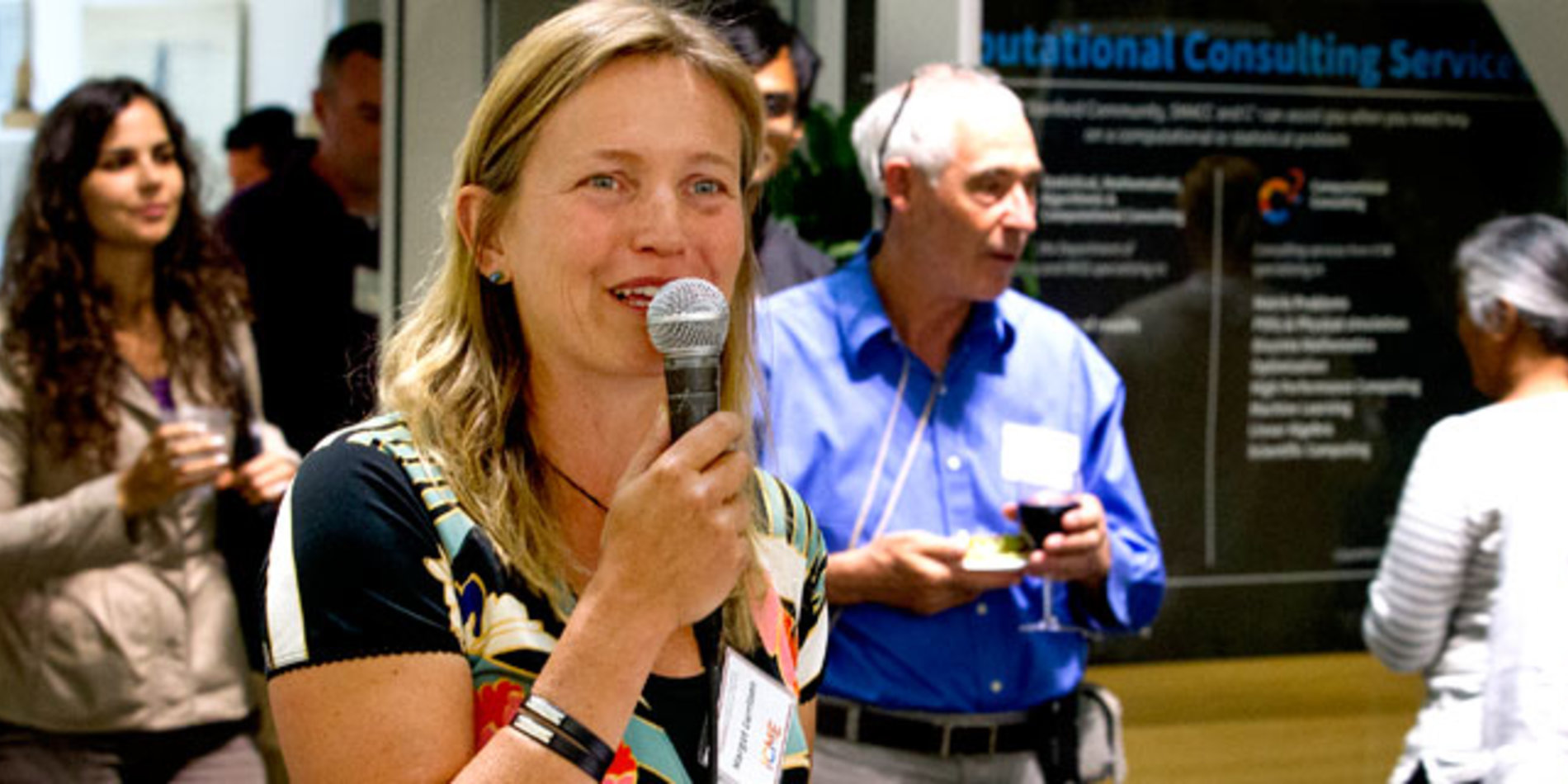ICME celebrates its first decade of using ‘big math’ to tackle big questions
The Institute for Computational and Mathematical Engineering (ICME) was founded in 2004 to bring advanced mathematics and computing techniques to bear in understanding and solving a wide array of complex problems.
Ten years later, it remains grounded in computational mathematics – a set of tools and techniques with a myriad of applications such as simulating air flow around a plane, understanding the movements of molecules, characterizing financial transactions or finding pockets of oil buried deep underground, said Director Margot Gerritsen.
“We develop mathematical models,” said Gerritsen, ICME’s director and a professor of energy resources engineering. “We optimize physical and engineering processes. We do big math.”
This approach, said Stanford Provost and Professor John Etchemendy, dovetails with the increasingly interdisciplinary landscape of scientific discovery.
"Some of the richest veins of discovery lie in the gaps between established disciplines and departments, and these discoveries increasingly involve the sophisticated integration of instrumentation, high speed data capture and software analysis,” Etchemendy said. He added that ICME’s “affiliated faculty and students include subject matter experts and data scientists working together to find new ways to answer questions that might otherwise fall through the cracks.”
The institute’s engine of discovery and its main product are the roughly 75 doctoral candidates in the program and the 40 master’s degree students who enroll each year in one of three study tracks: data sciences, computational geosciences or mathematical and computational finance.
Their interests span such fields as statistics, data sciences, control optimization, applied mathematics, high-performance computing, earth sciences, flow physics, bioengineering, genomics, economics, financial mathematics and molecular dynamics.
A growing master’s degree program prepares students to pursue PhDs in Computational Sciences and Engineering or positions them for jobs in industries such as web media, petrochemicals and Wall Street.
Of 60 courses ICME offers each year, 11 are open to Stanford undergraduates. Between courses and workshops ICME reaches more than 3000 students per year.
Gerritsen lauded the institute’s 50 affiliated faculty members, who hold principal appointments with 18 departments throughout Stanford University but nevertheless offer classes through ICME.
“We are so grateful to these professors, who have home departments but who choose to spend time here and work with these wonderful students,” she said.
During a recent anniversary reception outside ICME’s offices in the Huang Engineering Center, Gerritsen thanked some of those whose dedication gave the institute its character.
They included Michael Saunders, a research professor in Management Science and Engineering and ICME-affiliated faculty member. Saunders was named an “ICME VIP” for his years of work with the program and the impact he’s had upon students. As one ICME alumnus wrote in support of Saunders’ nomination, “(He) always takes time to meet with students and hear and refine their ideas.” Another alumnus wrote that he was “always there” for students.
Perhaps the warmest applause at the event went to Indira Choudhury who has been ICME’s student services officer since the institute’s inception in 2004. Described as a “saint” by one alumni nominator, another former student wrote that he would not have graduated without her help.
Gerritsen used the anniversary gathering to announce that ICME would name its conference room in honor of deceased Stanford Computer Science Professor Gene Golub, a pioneer of numerical analysis who helped create the algorithms and software that allowed researchers to solve science and engineering calculations with computers.
With support from George Forsythe, legendary founder of Stanford computer science, Golub helped lay the foundation for computational mathematics through such initiatives as Scientific Computing and Computational Mathematics Program (SCCM), the precursor program to ICME.
By 2004, SCCM had transformed into what is now ICME, led initially by Parviz Moin, the Franklin P. and Caroline M. Johnson Professor in the School of Engineering and director of the Center for Turbulence Research.
From 2006 to 2010, ICME moved forward under Peter Glynn, the Thomas W. Ford Professor in the School of Engineering and chairman of the department of Management Science and Engineering.
Gerritsen, who succeeded Glynn as ICME director, recently led the institute through recertification by the Stanford Faculty Senate. During the past several years she has strengthened ICME’s research muscle by joining with the Army High Performance Computing Research Center (AHPCRC) to create an advanced visualization center known as the HIVE and by becoming one of a handful of recognized centers of excellence in massively parallel computing research.
For Gerritsen, being part of ICME allows her to pass on her love of mathematics – articulated in her TEDx Stanford talk “The Beauty I See in Algebra” – to the next generation of Stanford students. ICME students pay the knowledge forward through free consulting services such as Computational Consulting and Statistical, Mathematical, and Computational Consulting that offer their expertise in computational problem solving to researchers through the Stanford community.
As Gerritsen says: “Math is behind everything. It’s omnipresent. It’s everywhere.”
Media contact
Tom Abate, Associate Director of Communications, Stanford Engineering, 650-736-2245, tabate@stanford.edu



